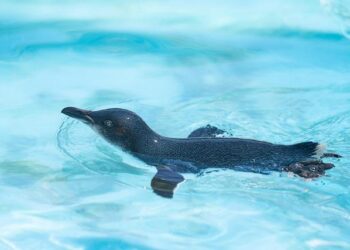Massive Meteorite May Have Fostered Early Microbial Life
Introduction to Cosmic Influences on Earth
A newly discovered cosmic body, significantly larger than the infamous meteorite that is believed to have caused the extinction of the dinosaurs, might have played a crucial role in nurturing the earliest forms of life-discovered-on-one-of-saturns-moons-raising-hopes-of-finding-alien-microbes/” title=”An element essential to life discovered on one of Saturn's moons, raising hopes of finding alien microbes”>microbial life on our planet. This revelation suggests that monumental space events contributed more than just devastation; they may have also supported the emergence of life.
Understanding Meteorite Impact on Primordial Earth
Research indicates that an asteroid or meteorite roughly 100 times greater in size than the Chicxulub impactor—often credited with wiping out nearly three-quarters of Earth’s species 66 million years ago—could have delivered essential nutrients and conditions favorable for life’s inception. This colossal object likely struck Earth during a time when our planet was experiencing significant volcanic activity and had a primordial atmosphere quite different from today’s.
Vital Nutrients Delivered by Space Rocks
The collision from such an enormous celestial object could have enriched Earth with vital elements like carbon, nitrogen, and phosphorus—critical components for biological processes. Recent studies show that these impacts can generate heat and create hydrothermal systems capable of sustaining complex organic chemistry. For instance, evidence suggests that subaqueous volcanic fields linked to early tectonic movements provided habitats for microorganisms shortly after these catastrophic events.
Implications for Astrobiology
This finding is particularly exciting for astrobiology—the study of potential life beyond Earth—as it opens up new pathways for understanding how extraterrestrial factors influence biological evolution. Scientists are now analyzing other celestial bodies within our solar system, including moons like Europa and Enceladus, which harbor underground oceanic environments potentially similar to prehistoric Earth.
Conclusion: A New Perspective on Life’s Origins
analyzing ancient cosmic collisions offers us profound insights into how interstellar phenomena may contribute to life’s genesis. As we further explore Mars or investigate gas giant moon surfaces in search of signs of ancient microbes or chemical signatures indicative of past life-supporting conditions, this understanding could reshape our notions about life’s resilience amidst cosmic brutality. Henceforth, continued research into asteroids’ role emphasizes their duality as both harbingers of destruction and architects in fostering living systems across timeframes spanning billions of years.































